Bendigo - Celebrate Vahland Heritage Driving Tour (East)

Wander the gracious boulevards of White Hills and Axedale, and tour the wine areas of Greater Bendigo.
Driving Time: 2.5 hours
Distance: 150 kilometres
Gold discoveries at White Hills and Heathcote were reported to Melbourne in 1852 when miners came to explore the many creeks in the region. When the rushes dried up, Germans planted vineyards in Axe Creek, Heathcote and later Elmore, developing an award-winning wine industry.
William Charles Vahland arrived in Sandhurst, as Bendigo was then known, Hannover in 1854. A young man of 26, Vahland had no luck finding gold but soon put his architectural training into practice and opened his first business in Sandhurst.
Celebrate Celebrate Vahland Heritage Driving Tour (East) Map
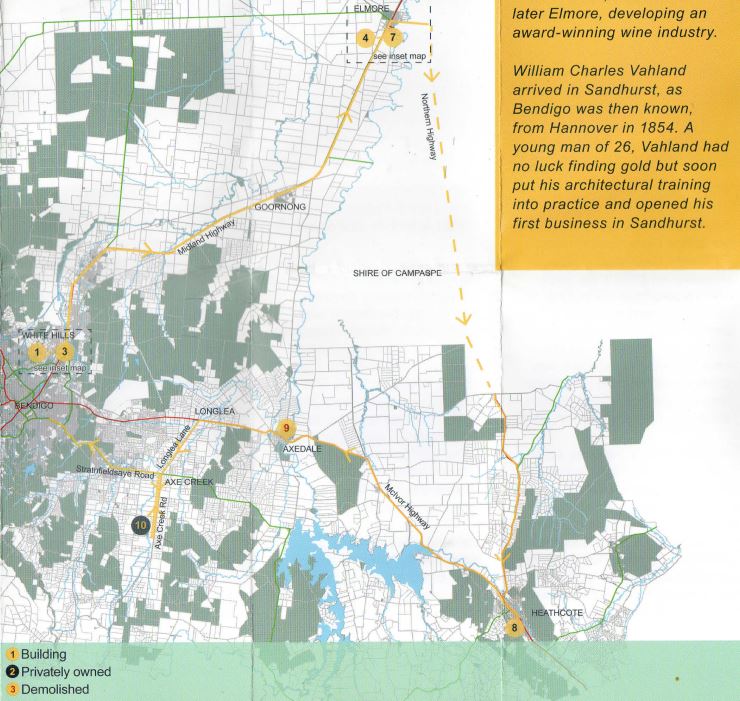
Miners rushed the Bendigo Creek in 1851, progressing north along the valley through the seven White Hills.
Chinese and Cornish miners were the most successful with the hard White Hills and many were buried nearby at the White Hills Cemetery. The imposing cemetery gates and fences were designed by Vahland (c1881) (1).
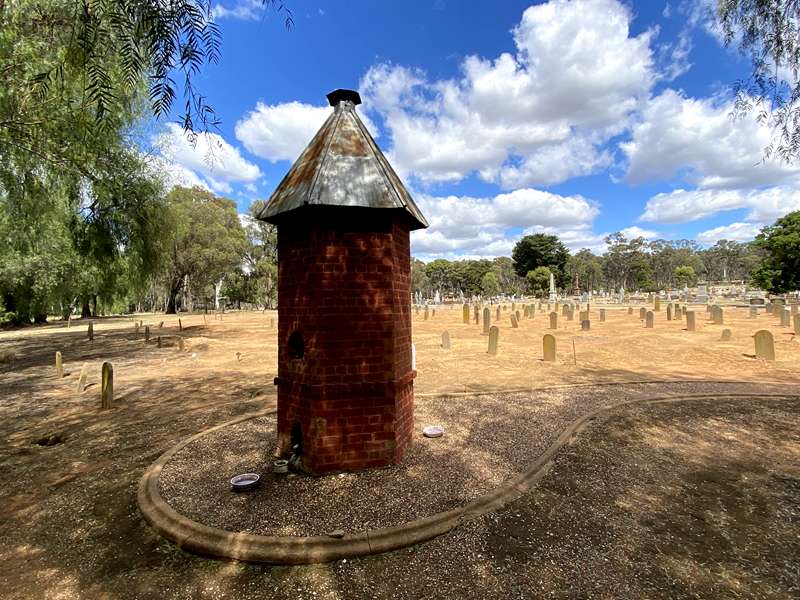
White Hills and Axedale both have towns with graceful curves laid out by government surveyor Richard Larritt in the mid 1850s. For Bishop Langley, Vahland designed Saint Luke's Anglican Church (1863)
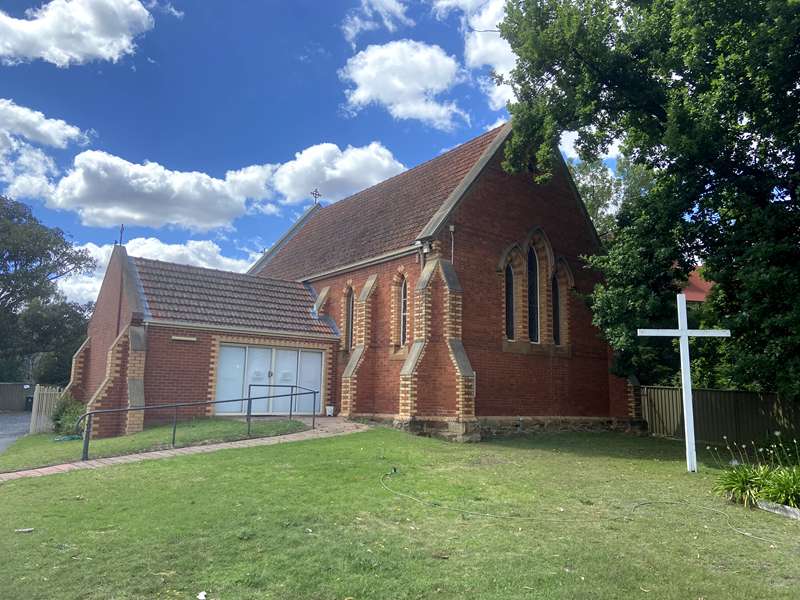
... and 'Langley Hall' (1904) on the boulevards of White Hills (3) (2)
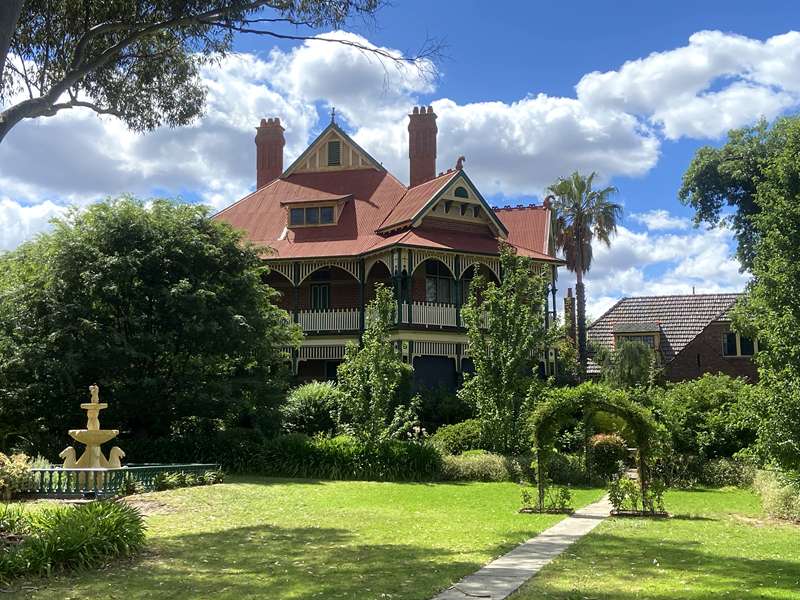
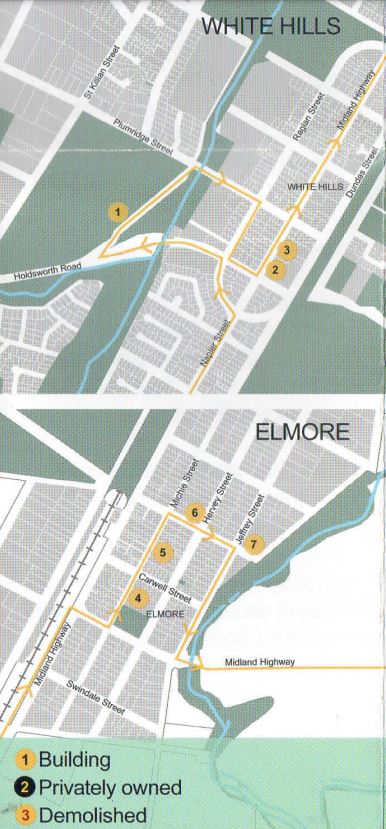
Saint Mary's, the first Catholic church in Axedale, was built on the sweep of a terrace for fellow German Reverend Dr Henry Backhaus (1962, demolished c1901) (9). Saint Mary's was built of the fine local bluestone quarried at Ingham's Hill over the Campaspe River. When the church became unsafe it was demolished and the bluestone was reused in the new church designed by Keogh and Austen.
Axedale was a crossing point over the hazardous Campaspe River for miners on their way to Mclvor Creek, Heathcote in 1853. The rush attracted about 40,000 people but it was the rich farming soils that provided an alternative once gold was exhausted. Heathcote began to grow into a town and the bold High Victorian elements on Saint John's Anglican Church (1868) reflect its new status (8).
Viticulture was successful here and Germans planted vineyards around Axedale, Axe Creek, Heathcote and later Elmore. Fellow Germans William Greiffenhagen and Carl and August Heine planted at Axe Creek in 1860. The Hercynia Vineyard had 300 acres of vines within a decade. A homestead and winery with a cellar (1870) were built in Axe Creek and part of the historic vineyard is still under plantation today as 'Black Estate' (10).
Vahland planted vines at his property 'Charterhouse' near Elmore and sold the wine internationally. Elmore showcases a number of stunning Vahland designs. There is Our Lady of Sacred Heart Church (1873) with its bellcote crowning the church, the plainer but elegant Saint Peter's Anglican Church (1876) and the Presbyterian Church (1898) (7) (4) (6).
The social centre of the Elmore community was the Mechanics' Institute and Vahland designed a fine addition to it, the Athenaeum Hall and Library (1885) (5).
Phylloxera disease was found in 1893 and devastated the viticultural industry for many decades. In the late 1960s wine growing and making in Greater Bendigo underwent a resurgence and today the region is known for its excellent wines.
(5) These buildings are privately owned. Please only view from the public domain.
(33) These buildings have been demolished
Explore other areas of Greater Bendigo with these brochures: - City Centre, Bendigo Views, East, Eaglehawk, West Bendigo.
This brochure is available from the Bendigo Visitor Information Centre.
Location
Holdsworth Road, White Hills 3550 Map









